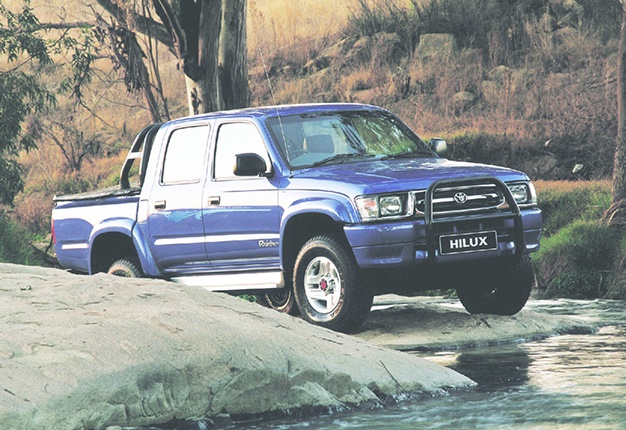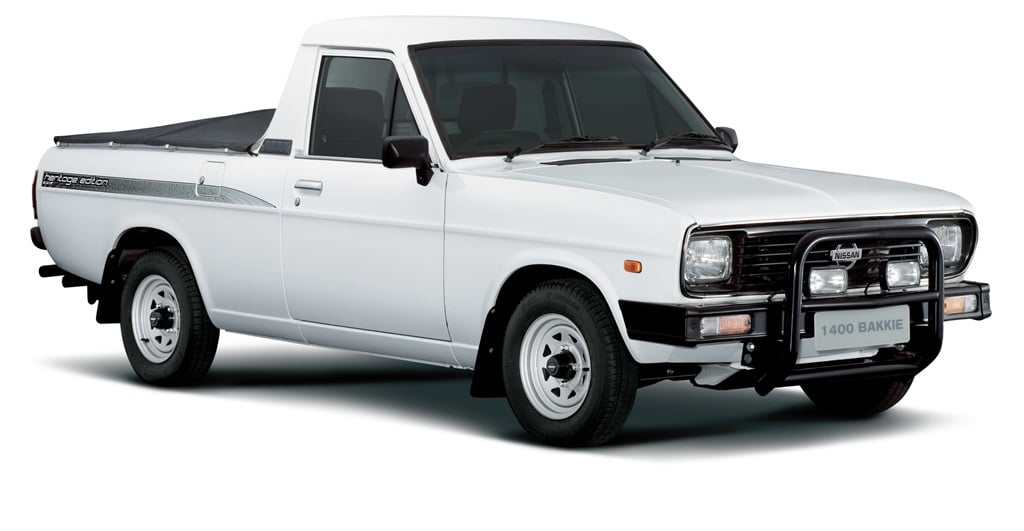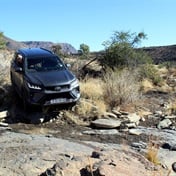The 1990s were a strange decade for Toyota, as it skipped the international fifth-generation Hilux, continuing to produce the fourth-generation bakkie from the mid-1980s until deep into the 1990s.
Toyota Hilux KZ-TE
That meant rivals had an opportunity to gain on it, especially with regards to cabin design and engine output. This all changed with the introduction of Toyota’s sixth-generation Hilux.
READ: VW Caddy, Nissan Safari... South Africa’s most iconic bakkies from the 1980s
At first, the new model was too radical a change, a predictable reaction as South Africans were in effect transitioning two generations in one upgrade.
Hilux traditionalists complained of its rounded appearance and independent front suspension.
Image: Toyota
Initially, the diesel offering was poor, with only an extremely slow 3000D naturally-aspirated double-cab available. Then Toyota introduced a turbocharged version, called the KZ-TE.
An indication of how legendary the KZ-TE became can easily be understood by browsing the prices of pre-owned ones. It's startling when a near 20-year old bakkie has better residual value than a ten-year-old German compact luxury sedan…
Mazda Magnum
Back in the 1980s South Africa's Ford and Mazda production, distribution and marketing were strangely streamlined within an industrial arrangement known as SAMCOR. Ford realised it required a true bakkie rival to Hilux, after the Cortina production had ceased, and the only option was to try a joint-venture.
Mazda was selected as a partner and the result were the SAMCOR twins, both evolved from the Japanese brand’s B-Series: Courier and Drifter. This arrangement matured into the 1990s.
The Mazda B-Series bakkies were perhaps the best example of outrageous 1990s Japanese graphic design available in South Africa at the time, especially the Magnum version.
If you wanted a powerful load-hauler, this was the answer, as it was powered by an enlarged version of Ford’s Essex V6, displacing 3.4-litres. It was a strange amalgamation of Japanese bakkie platform and British Ford engine technology.
Isuzu KB280
Someone at Isuzu was paying very close attention to the lifestyle changes happening in South Africa during the early 1990s.
Whilst other bakkie brands focussed their double-cab bakkies as hardcore commercial vehicles, suited for extreme trans-African safaris, Isuzu realised that South Africans were keen on a bakkie that could deputise as a family car in the week, and play rough if required, on weekends.
The result was its KB280 double-cab: the first true leisure bakkie in South Africa. Isuzu's formula was very simple. Applying passenger car ergonomic principles to the KB double-cab’s cabin made it vastly superior to other early 1990s bakkies in terms of comfort and Isuzu’s 2.8-litre turbocharged engine might not have been the most powerful, but it was quieter and smoother than any rival.
Mitsubishi Colt 2800Tdi
The return of Mitsubishi bakkies in the mid-1990s showed potential, but it was the third-generation Triton, marketed locally a Colt, which garnered the accolades.
These attractively styled bakkies featured excellent off-road ability - as one would expect from anything developed in the era of Mitsubishi’s Dakar off-road racing dominance.
Image: Supplied
By the late 1990s, these third-generation Colts were renowned for their asymmetric bonnet-scoops too, which was a defining detail of the time – and served a necessary purpose in helping feed air to the 2.8-litre turbodiesel engine.
Boosting 92kW/280Nm, it was undoubtedly the best diesel engine available in any South African bakkie by the late 1990s and did much to establish the ‘cult’ of Colt amongst local bakkie owners who desired something other than a Hilux double-cab.
In an irony of numerology, the Colt 2.8-litre became what Isuzu should have evolved its KB280 into, towards the late 1990s.
Nissan 1400
The evergreen Champ. Nissan’s 1400. For decades South Africa was the final frontier for this rear-wheel-drive compact bakkie and there was very little that it could not do.
Image: Nissan
Noisy, with very rudimentary ergonomics, it was also mechanically better suited to actual bakkie tasks than any of its front-wheel-drive rivals. The unbreakable mechanicals and rear-wheel drive load-carrying configuration made it the only true compact workhorse choice for those who needed a half-ton bakkie.
As the South African motoring market opened-up after 1994, junior engineers and executives from Japan would be astounded by robust demand for a product most of them had only seen in the company’s Yokohama museum.




 Publications
Publications
 Partners
Partners














